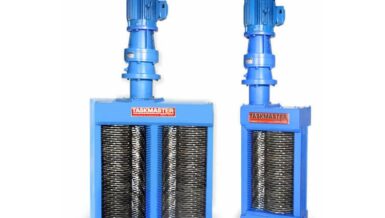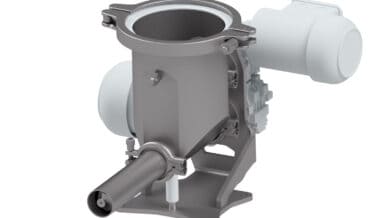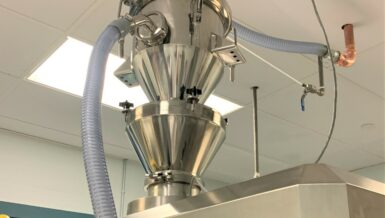flowsonic supports the flow of powders in silos, pipes, feeders, conveyors and other bulk material handling applications.
For system manufacturers, process engineers, and operators:
- The timely application of flow enhancing solutions is recommended to prevent quality issues and production interruptions, such as bridging, ratholing and demixing.
- As an energy-saving alternative to mechanical or pneumatic solutions, the higher investment costs are outbalanced by improved processes, as well as less material stress and noise exposure.
Inefficient bulk material handling – a recognized issue
Silos, hoppers, mixers, dosing units, and other bulk material handling units are increasingly being designed according to the product. Still, bulk solids with poor flow characteristics pose challenges for professionals. Despite detailed information on bulk characteristics, the challenges of classical flow problems such as demixing, ratholing and bridging remain.

Depending on the product, the friction forces between the individual particles and the wall cause production issues to arise. The consequences of these dynamics should not be underestimated: Unplanned plant shutdowns, reduced production throughput, quality losses, and rising maintenance costs are only some of the direct and indirect challenges. In such situations, the use of mechanical and pneumatic aids is often considered; with extreme measures, such as manual hammer blows against the plant equipment, being taken to keep the production process going.
Approach Ultrasonic
Conventional discharging and flowing aids have their disadvantages. Continuous vibrations stress the equipment and thus increase the risk of failure and cost of operation. An unconventional approach that aims to minimize these impacts is the systematic use of ultrasonic. In bulk material handling, ultrasonic reduces the static and dynamic frictions between the moving parts and the equipment. Whereas ultrasonic is already well established for screening applications, the technology now also helps to prevent powders from adhering to the inner walls of material handling systems, with the product flow being optimized accordingly.
Turning problems into advantages
Since there is less compaction of the product, the usual problems such as bridging, ratholing or demixing are mostly prevented. This allows firms to improve production processes and thus gain an advantage by preventing classical bulk material handling problems. Cleaning intervals are less frequent and shorter, with no parts of the ultrasonic equipment being directly in contact with the product. Experience shows that dry bulk materials with low moisture content are best suited for ultrasonic excitation, whereas the chances for success are considerably lower for oily or greasy bulk materials. If the inner walls are polished and the product responds well to ultrasonic, pneumatical and mechanical flowing aids become irrelevant. A necessary condition for flowsonic to have a positive impact are: 1) a wall thickness of below 6mm; and 2) a sufficient angle of inclination for conveyor, channels, and pipes of at least 5°. The investment costs for an ultrasonic system as a flowing aid may be higher than for mechanical or pneumatic solutions. However, these costs usually pay off within a short period of time: The generators of Artech Ultrasonic Systems typically operate with power outputs of up to 120W. This makes the solution energy- and cost-efficient in annual operation.
Patented technology makes the difference
In the classical method, the frequency of the geometry must be tuned to a relatively small frequency band of the ultrasonic generator. A pronounced resonance must be available for the resonance excitation to be efficient. However, in the case of bulk material containers, pipes, conveyors or complex structures, resonance tuning is almost impossible. Instead of stimulating a defined resonance, the flowsonic generators vary the frequency within the frequency range, so that ultrasonic is made applicable to various geometries.















